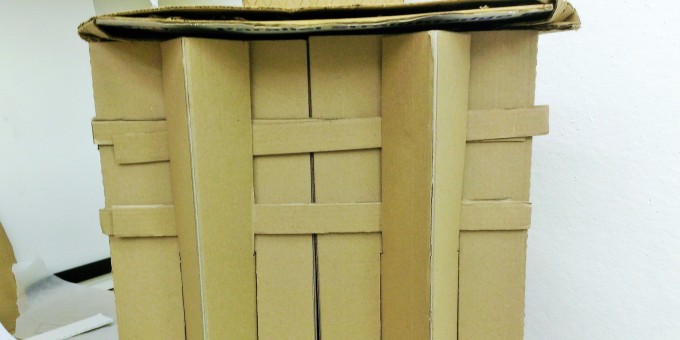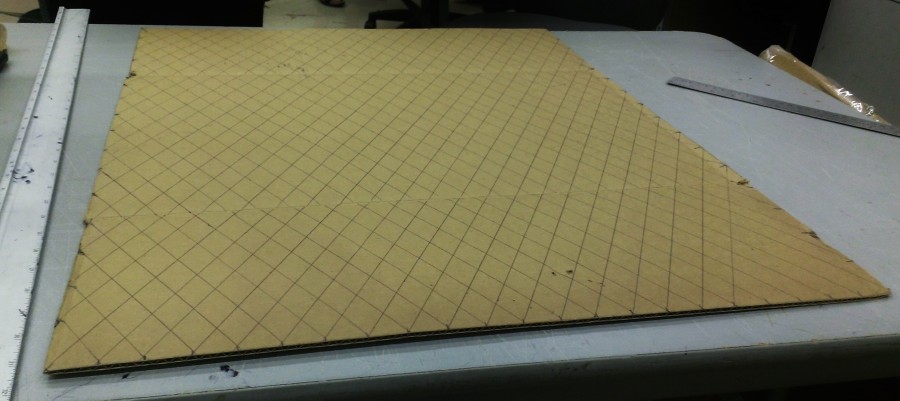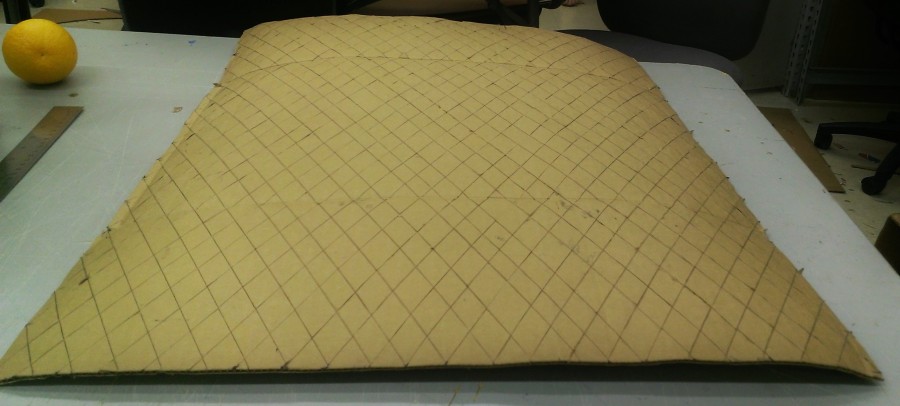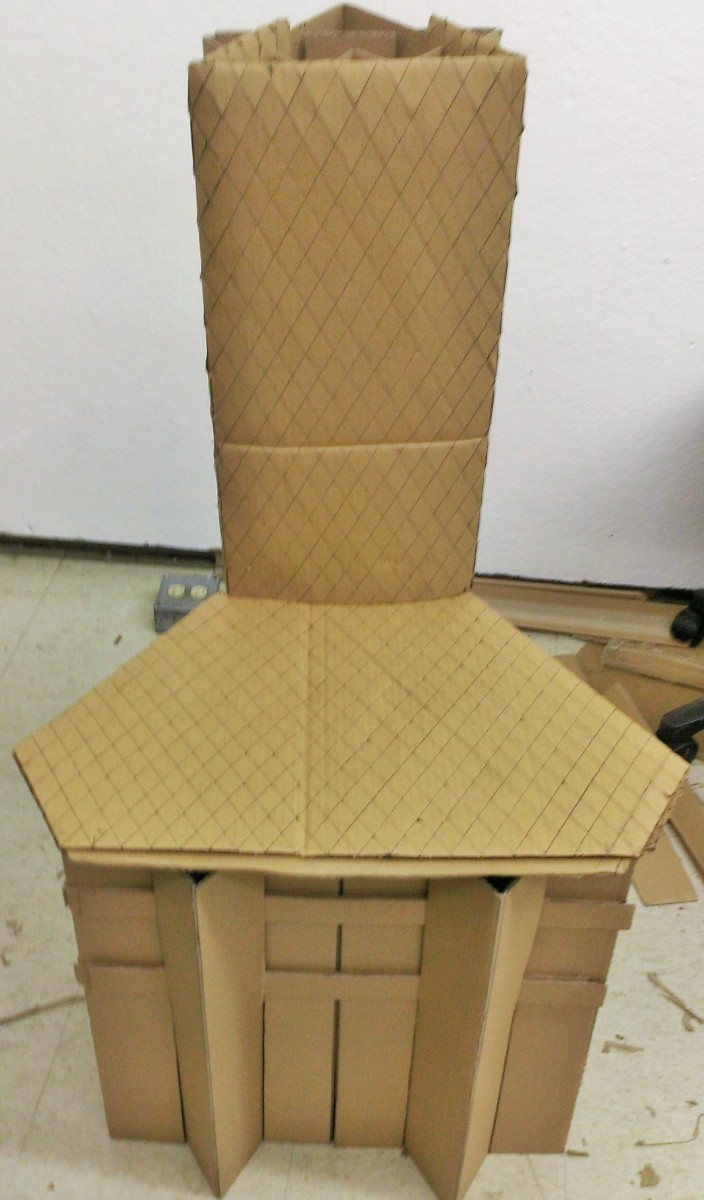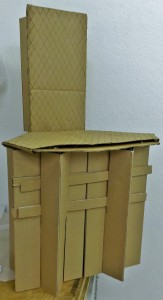 Full size chair designed to hold at least a 200-pound person.
Full size chair designed to hold at least a 200-pound person.
Materials: recycled (salvaged) cardboard (primarily 40×40″ sheets extracted from industrial light fixture boxes from a campus construction project). No other materials or connectors, only cardboard.
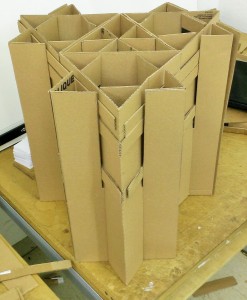 The primary structure is formed by two interlocking equilateral triangular prisms (yes, I know, this happens to also be the shape of the Jewish star). Three of these units are strapped together with long strips of cardboard to form the base of the chair. The back is one additional unit, with one point of the star removed for the back rest.
The primary structure is formed by two interlocking equilateral triangular prisms (yes, I know, this happens to also be the shape of the Jewish star). Three of these units are strapped together with long strips of cardboard to form the base of the chair. The back is one additional unit, with one point of the star removed for the back rest.
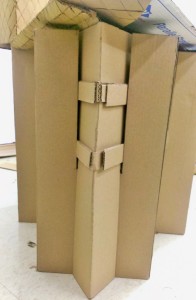 The seat is formed with a solid sheet of cardboard, a layer of shredded cardboard and a layer of quilted cardboard that extends around the edge of the solid sheet to form tabs that lock onto the chair base. The seat back is also formed with a sheet of quilted cardboard.
The seat is formed with a solid sheet of cardboard, a layer of shredded cardboard and a layer of quilted cardboard that extends around the edge of the solid sheet to form tabs that lock onto the chair base. The seat back is also formed with a sheet of quilted cardboard.
The quilting effect is pretty cool and, though time-intensive, straightforward. To match the angles of the equilateral triangles in the base, I used 60o angles for my quilting, in opposite directions, measured from the edge of the sheet. Once I drew out a grid of evenly spaced lines at the 60o angles, I scored the cardboard along each line.
It’s important to understand the scoring technique. You need to cut all the way through the cardboard, except for the last flat layer. Typically, this means cutting through the top outer layer and all of the inner structure. Just don’t cut too far, because that final layer is what holds the sheet together. It works best to go over each line several times with a box cutter, cutting through a small layer of corrugation each time. After all of the lines are cust in both directions, fold the cardboard along each cut sequentially. After this step, the cardboard will naturally want to curl, and will behave similarly to fabric.
When assembled, the chair is quite sturdy and visually appealing. I used a seat height of 21″,which is quite comfortable. The back is not particularly sturdy, but it does work, and you can lean back safely. The issue is that it’ll just keep leaning back further and further.
